Natural Blonde Hair Care: 10 Tips to Keep Your Hair Bright, Healthy, and Hydrated
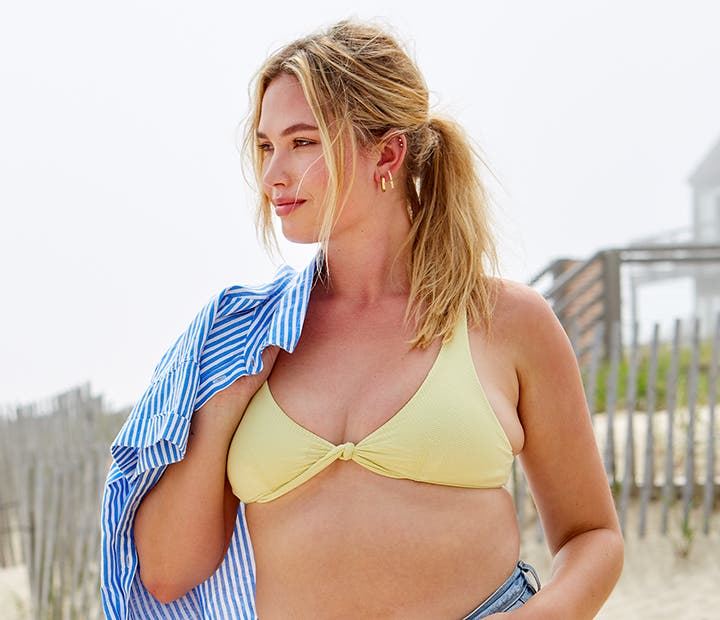
If you have naturally blonde hair, lucky you! Seriously – only 2 percent of people in the world have a golden hue from birth. But that also means that taking care of bleached hair calls for a different hair care routine than the blondes born with the lucky natural hue.
For example, while you may not have to worry about the harsh effects of color treatments, natural blondes are more prone to environmental hair damage. Why? Blonde strands are naturally more porous so they absorb more of whatever you expose them to, whether sunlight or chemicals like chlorine. Everything that comes in contact with your hair – including products – has the potential to make it brittle,dry, and even alter your natural tone.
Here Are our Best Natural Blonde Hair Care Tips to Keep it Bright, Healthy, and Moisturized.
Maintain Optimal Moisture
As you now know, blonde hair is more porous than other colors. In addition, the drier your hair, the more penetrable it is, allowing it to take on color from environmental elements, smoke, and even products. So the combination of the two – dry and blonde hair – is bad news. That’s why moisturizing is especially important for natural blonde hair care.
To keep your hair moisturized, opt for a cleanser that doesn’t strip natural oils. New Wash, for example, contains essential oils and extracts that clean without removing your natural, protective coating of oil. It rebalances and leaves you with conditioned, soft strands.
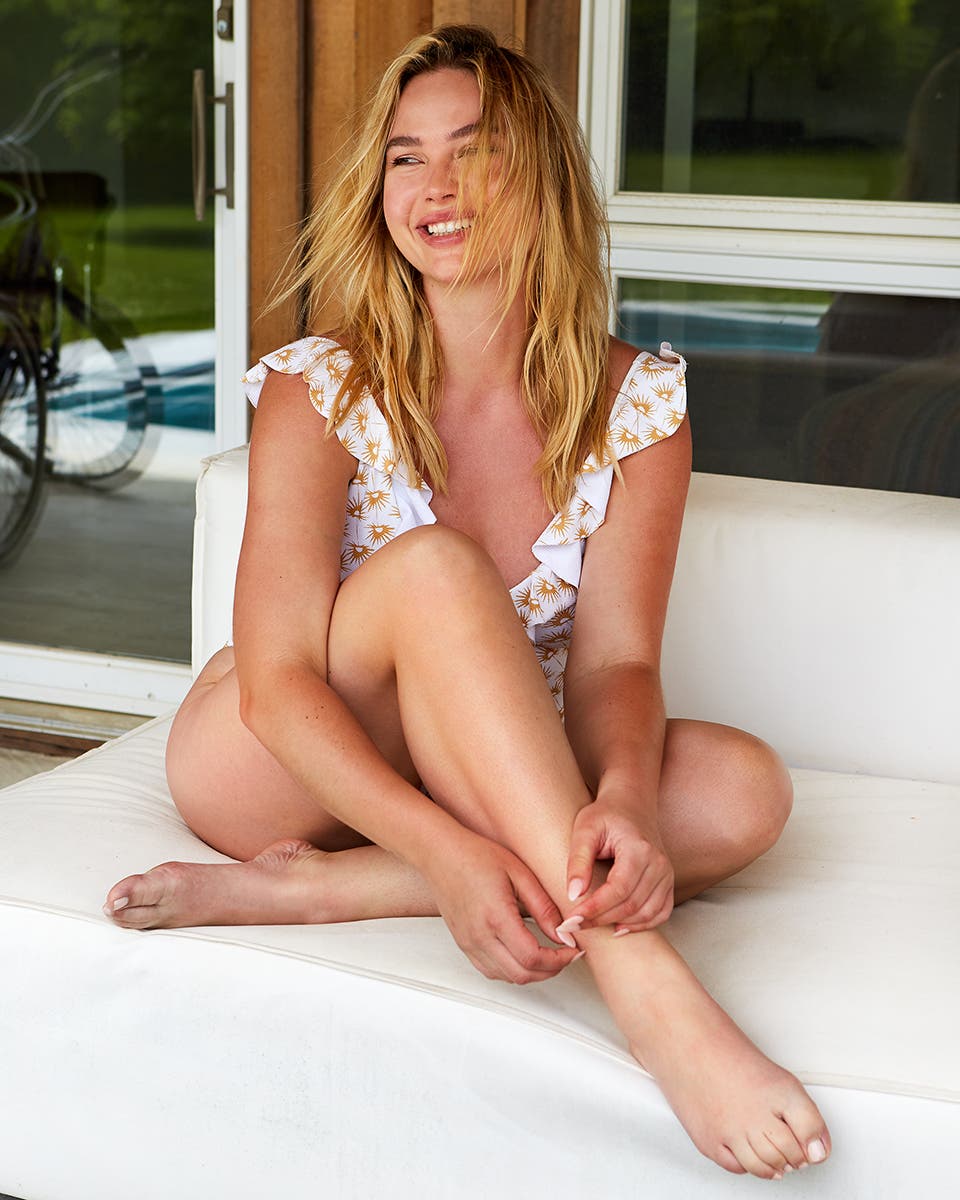
Protect Your Hair From the Sun
The sun damage can harm all hair colors and types, but light-colored hair is especially at risk because natural blondes tend to have fewer, finer strands. To stay shielded from the sun, wear a scarf or wide-brimmed hat (ideally one rated with an ultraviolet protection factor, or UPF) when you’re outside.
Or, use a spray or powder-based SPF product for your hair. Make sure to work the product into your part, since a sunburned scalp can impact the strength and quality of your hair.
Consider Heat Protection, Too
For most people, the sun isn’t the only source of damage. Frequent use of hot styling tools, like dryers and curling irons, can cause additional issues, like frizz and breakage. It’s best to keep heat styling to a minimum, but when you do pull out your hot tools, make sure to use a heat protectant beforehand. Dressed Up, for example, is a lightweight blow-dry lotion that protects against both heat and UV light.
To take a total break from heat styling, learn to embrace your natural texture. A lightweight styling cream (like Hair Balm) can help that texture come to life with effortless, air-drying – no hot tools required.
Avoid Chlorine
Chemicals like chlorine are damaging to all colors, but particularly natural blondes. The concern isn’t only that chlorine turns your strands green (a result of copper deposits in the water that are oxidized by chlorine and bond to the proteins in your hair.) Chlorine strips away natural hair oils, leaving your scalp dry and strands brittle, and prone to breakage. It can also make hair more porous, which – as you know by now – is bad news for natural blondes.
The best strategy for taking care of natural blonde hair is to avoid chlorinated water;when possible, wear a ponytail or bun when you’re in the water or go for full coverage with a swim cap. Also make sure to rinse your hair thoroughly both before and after getting in the pool to minimize chlorine absorption.
Incorporate Cold Washes
We know, a cold shower doesn’t sound particularly relaxing, but it can do wonders for blonde hair care. Washing your hair the right way and rinsing with cold water can seal the cuticles (the outermost layer of hair), locking in moisture. But don’t worry – you don’t have to freeze. Use warm water to cleanse, and then rinse with cold; just a few seconds will do.
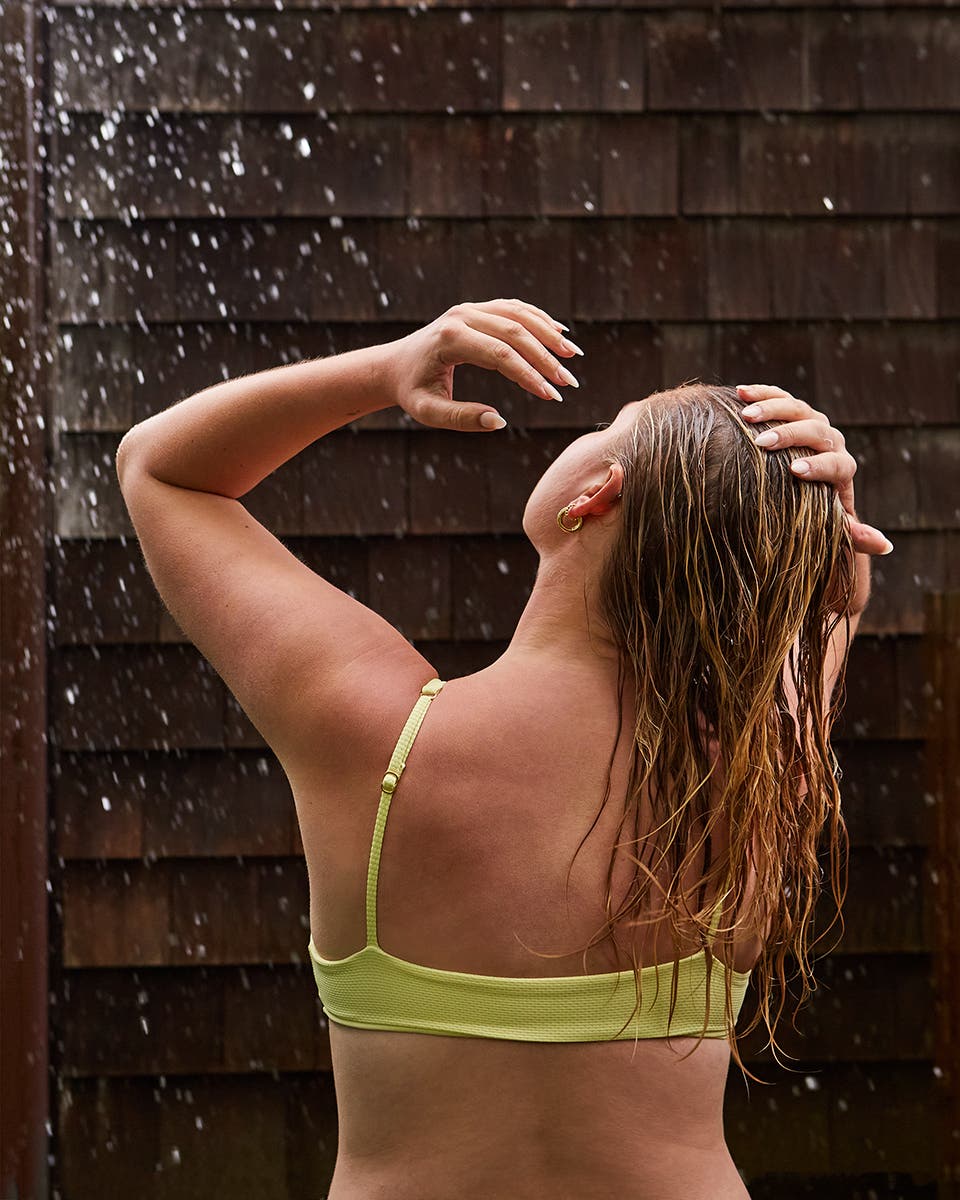
Avoid Hard Ingredients
There are plenty of products out there that will claim to brighten, smooth, and hydrate natural blonde hair. But if you read the labels, you’ll find a list of harsh ingredients such as parabens and ammonia. These chemicals can cause a range of harmful effects, from scalp irritation to hair loss.
Shampoos also often contain sulfates (commonly listed as Sodium Lauryl Sulfate or Sodium Laureth Sulfate) – they’re what create the traditional shampoo suds. But sulfates are hard on your hair, washing away natural proteins,lifting the cuticles, and requiring conditioners and masques.
How do you avoid these additives? Skip the marketing blurbs on the front of the bottle and focus on the ingredient list carefully. Look for gentle, beneficial ingredients like essential oils and keratin. Remember: the higher an ingredient is on the list the more of it is present in the formula.
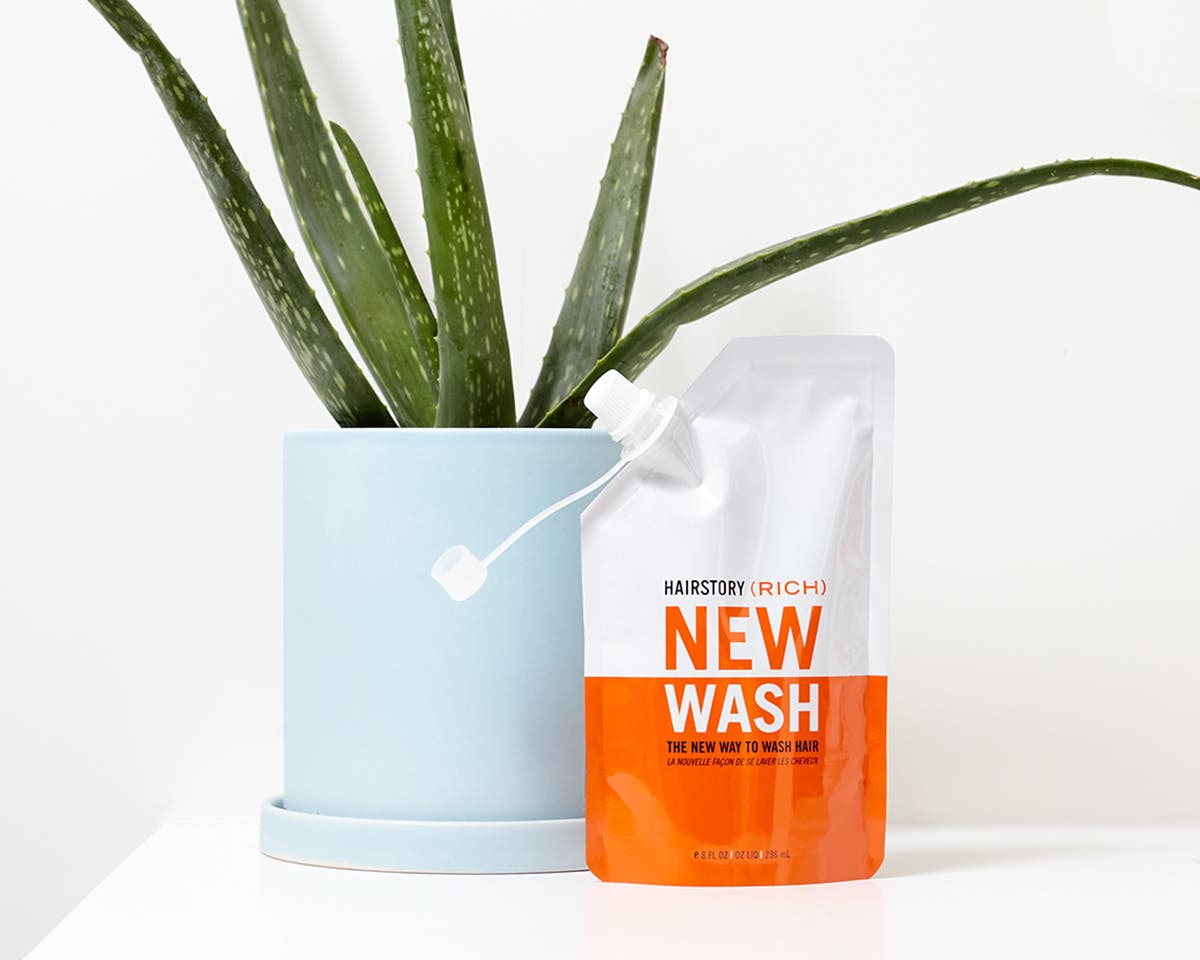
Wash, Don’t Shampoo
Which shampoo is best for natural blonde hair? Turns out, it’s not a shampoo – or at least, what you might think of in the conventional sense. Traditional shampoos contain damaging detergents and often harsh chemicals. Rather than truly cleansing your hair, these shampoos can actually lead to more oiliness and breakage.
Instead, natural blondes can benefit from a detergent-free shampoo alternative that uses natural essential oils and gentle saturated cleansers to remove impurities while also moisturizing hair.
Try Dry Shampoo Between Washes
Also keep in mind that your washing frequency is an important factor to take care of blonde hair. Ideally, you should cleanse your hair no more than every other day. On the days you don’t wash, try using a dry shampoo to minimize oiliness and boost your volume. Be sure to pay attention to ingredients, though. Aerosol dry shampoos often contain alcohol, which can cause dryness and lead to breakage.
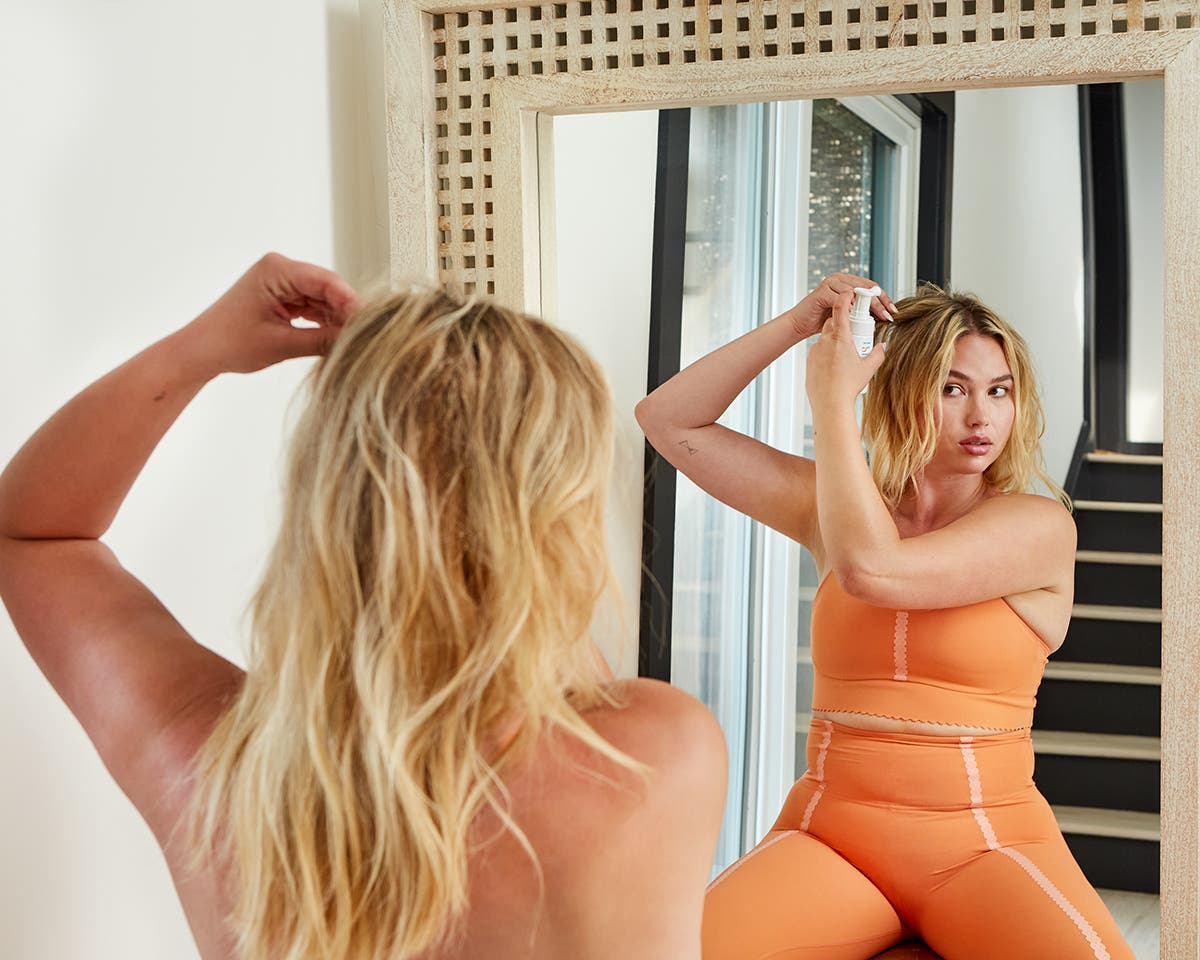
Evaluate Your Water Quality
The hardness of your water can have an effect on your hair’s appearance. The ‘harder’ the water, the more dissolved minerals it contains – such as calcium, magnesium, copper, iron, or chlorine. A high mineral content can make cleansing products challenging to thoroughly wash out, creating buildup over time.
Hard water can also interfere with the effectiveness of cleansing agents. To minimize those effects, invest in a shower head filter, which can remove harmful mineral deposits from your water.
Tone Your Hair
Even if you take protective measures, it’s likely that natural elements will tarnish the brightness of your blonde. If the color is straying from its true roots, visit your stylist regularly to tone your hair. Different from bleach treatments, toners don’t lift the color of your strands, but rather, add a tint to keep cool-tones cool and counteract yellowing or brassiness.
Ask your stylist about creating a custom toner by adding pigment to New Wash, which can help ensure your hair stays light, vibrant, and – most importantly – healthy.
Your natural blonde hair is a rare feature, so protect it at all costs! Treat it as you would fine cashmere and keep it in optimal health while maintaining its bright, blonde beauty.



